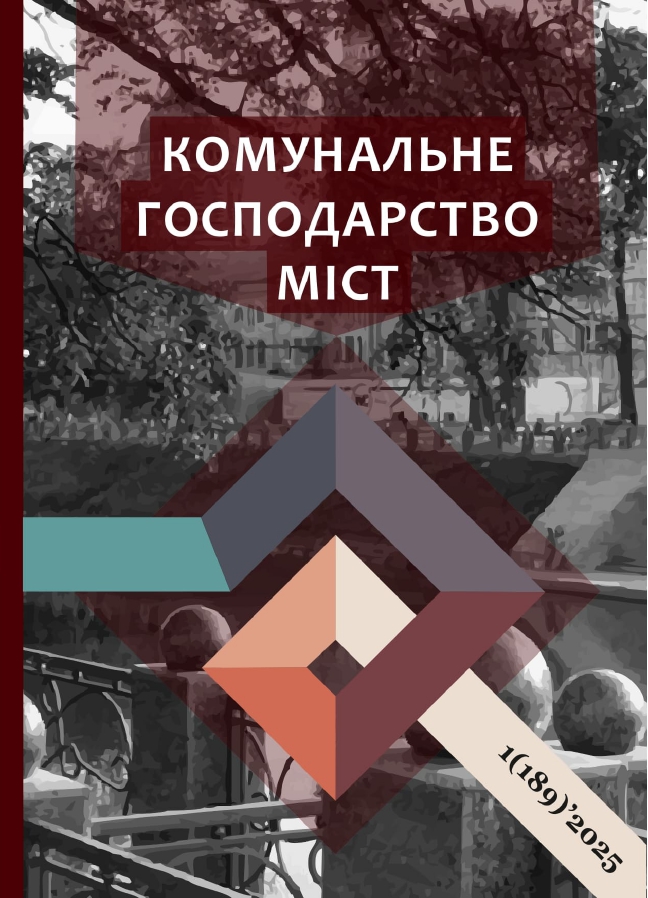RESEARCH OF THE PROCESS OF VISUAL ART TRANSMISSION IN MUSIC AND THE CREATION OF COLLECTIONS FOR PEOPLE WITH VISUAL IMPAIRMENTS
DOI:
https://doi.org/10.33042/2522-1809-2025-1-189-2-7Keywords:
telemedicine, self-diagnosis, LSTM, BERT, artificial intelligence, technological innovation, artificial neural networkAbstract
The article examines the use of neural networks in telemedicine for patient self-diagnosis, focusing on custom LSTM (Long Short-Term Memory) models and pre-trained BERT (Bidirectional Encoder Representations from Transformers) models. Telemedicine has become essential in modern healthcare, particularly due to the rise in remote consultations and diagnostics during global health crises. The study reviews research in this area, highlighting contributions from international and Ukrainian experts. It explores the effectiveness of neural networks in interpreting patient symptom descriptions and generating accurate diagnoses.
The custom LSTM model processes text-based symptom descriptions but faces challenges with limited datasets, impacting its diagnostic accuracy. On the other hand, the BERT model leverages transfer learning, achieving over 92% accuracy in predictions, thanks to its ability to understand complex language inputs. An enhanced LSTM model is also presented, incorporating Dropout and Batch Normalization layers, which help increase the robustness and accuracy of the predictions while managing the model's complexity.
The article also discusses the technical challenges of training these neural networks, including the variability of symptom descriptions and the need for large annotated medical datasets. Proposed solutions include domain-specific enhancements and data augmentation to improve the models' performance.
In comparing the three models, the study identifies that while the custom LSTM model is more flexible and simple, it struggles with generalization. The BERT model, by contrast, excels in understanding and accuracy but requires more computational resources. The enhanced LSTM model offers a balance between complexity and performance.
In conclusion, neural networks offer promising advances in telemedicine by providing accurate, AI-assisted self-diagnosis. Although challenges remain, such as data requirements and computing power, models like BERT are key to improving healthcare accessibility and accuracy in telemedicine applications.
Among the main advantages of using artificial intelligence for the healthcare system are in-depth diagnostic analysis, individual treatment regimens, and optimization of medical processes. However, modern technologies in the medical field are not yet able to completely replace experienced specialists.
References
ШІ в медицині: застосування, переваги та нові можливості. [Електронний ресурс] – Режим доступу: [https://wezom.com.ua/ua/blog/shi-v-meditsini-zastosuvannya-perevagi-ta-novi-mozhlivosti], free (date of the application: 15.08.2024).
S. Katiyar, A. Farhana Artificial Intelligence in e-Health: A Review of Current Status in Healthcare and Future Possible Scope of Research Journal of Computer Science, 18 (10) P. 928-939 – 2022.
Panke Qu, John P. EvansEnhanced neutralization resistance of SARS-CoV-2 Omicron subvariants BQ.1, BQ.1.1, BA.4.6, BF.7, and BA.2.75.2 Cell Host Microbe, Jan 11; 31(1). P.9–17 – 2023 [Electronic resource] – Regime of access: https://www.ncbi.nlm.nih.gov/pmc/articles/PMC9678813/ free (date of the application: 19.08.2024)
BERT (модель мови) [Електронний ресурс] – Режим доступу: https://uk.wikipedia.org/wiki/BERT_(%D0%BC%D0%BE%D0%B4%D0%B5%D0%BB%D1%8C_%D0%BC%D0%BE%D0%B2%D0%B8) free (date of the application: 21.08.2024)
Шатний С.В. Інформаційна технологія обробки та аналізу кардіосигналів з використанням нейронної мережі – Кваліфікаційна наукова праця на правах рукопису. Дисертація на здобуття наукового ступеня кандидата технічних наук (доктора філософії) за спеціальністю 05.13.06 «Інформаційні технології» – Національний університет «Львівська політехніка», Міністерство освіти і науки України, Львів, 2021.
В. Д. Конюхов / Використання ансамблю нейронних мереж для визначення діагностичних параметрів хребців // Проблеми машинобудування, Т. 27. № 1. С. 56-61. – 2024.
Government approves strategy for telemedicine development in Ukraine [Електронний ресурс] – Режим доступу: https://www.kmu.gov.ua/en/news/uriad-ukhvalyv-stratehiiu-rozbudovy-telemedytsyny-v-ukraini free (date of the application: 28.08.2024)
Babylon Health [Електронний ресурс] – Режим доступу: https://www.babylonhealth.com/en-us/ free (date of the application: 28.08.2024)
Doctor Online – Health Assistant [Електронний ресурс] – Режим доступу: https://doctoronline.care/ free (date of the application: 28.08.2024)
Disease Symptom Dataset [Електронний ресурс] – Режим доступу: https://www.kaggle.com/datasets/itachi9604/disease-symptom-description-dataset free (date of the application: 28.08.2024)
eICU Collaborative Research Database [Електронний ресурс] – Режим http://dx.doi.org/10.1038/sdata.2018.178 free (date of the application: 28.08.2024)
Downloads
Published
How to Cite
Issue
Section
License
The authors who publish in this collection agree with the following terms:
• The authors reserve the right to authorship of their work and give the magazine the right to first publish this work under the terms of license CC BY-NC-ND 4.0 (with the Designation of Authorship - Non-Commercial - Without Derivatives 4.0 International), which allows others to freely distribute the published work with a mandatory reference to the authors of the original work and the first publication of the work in this magazine.
• Authors have the right to make independent extra-exclusive work agreements in the form in which they were published by this magazine (for example, posting work in an electronic repository of an institution or publishing as part of a monograph), provided that the link to the first publication of the work in this journal is maintained. .
• Journal policy allows and encourages the publication of manuscripts on the Internet (for example, in institutions' repositories or on personal websites), both before the publication of this manuscript and during its editorial work, as it contributes to the emergence of productive scientific discussion and positively affects the efficiency and dynamics of the citation of the published work (see The Effect of Open Access).

